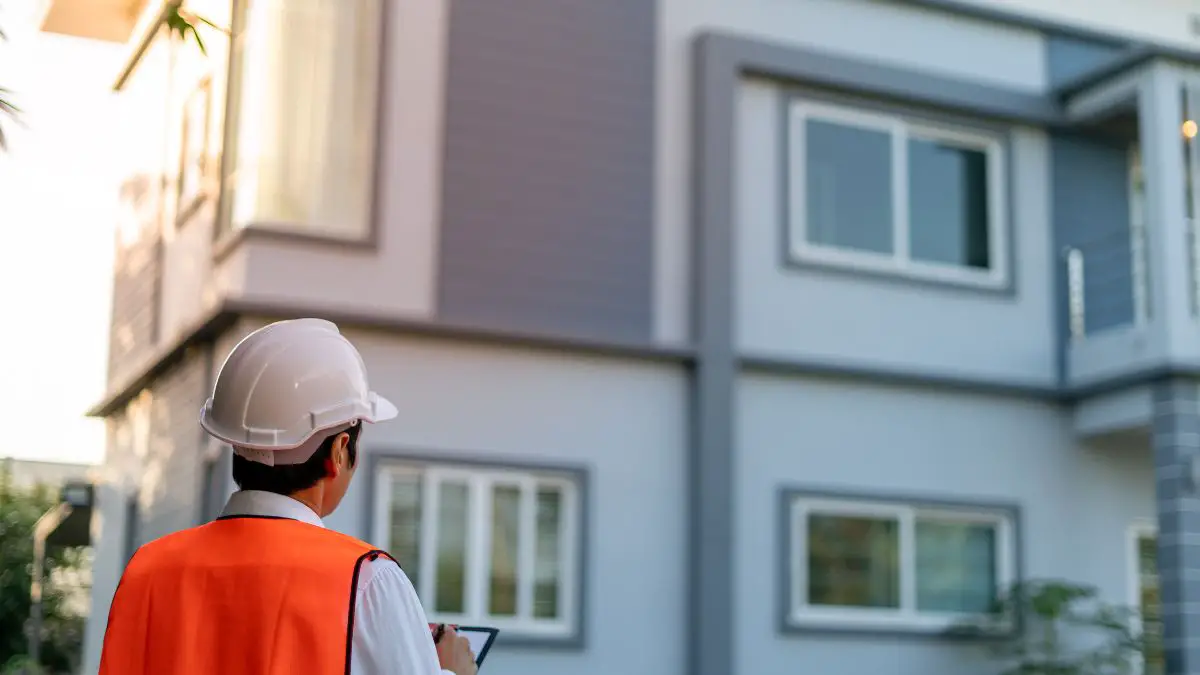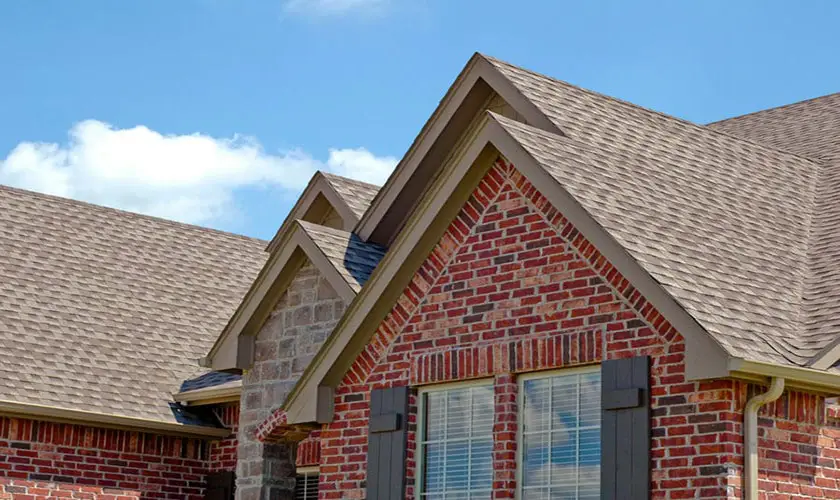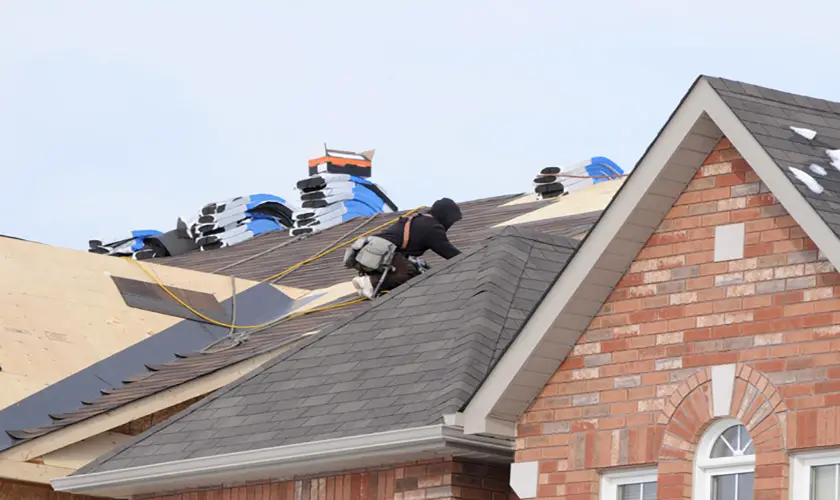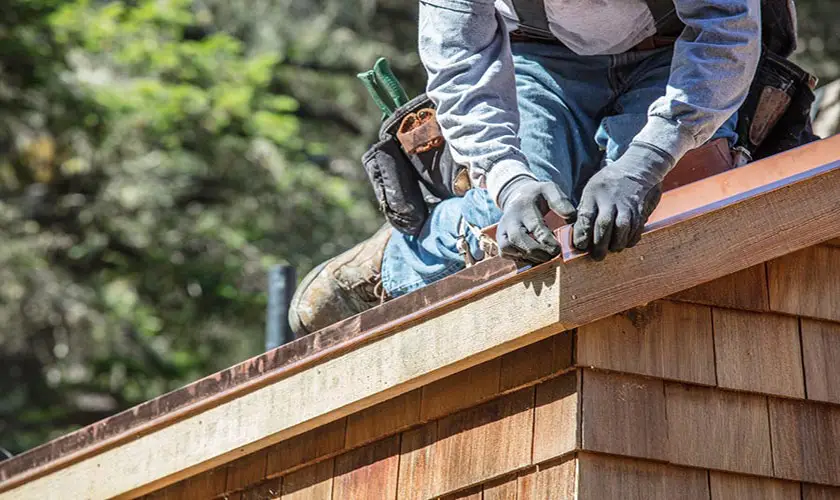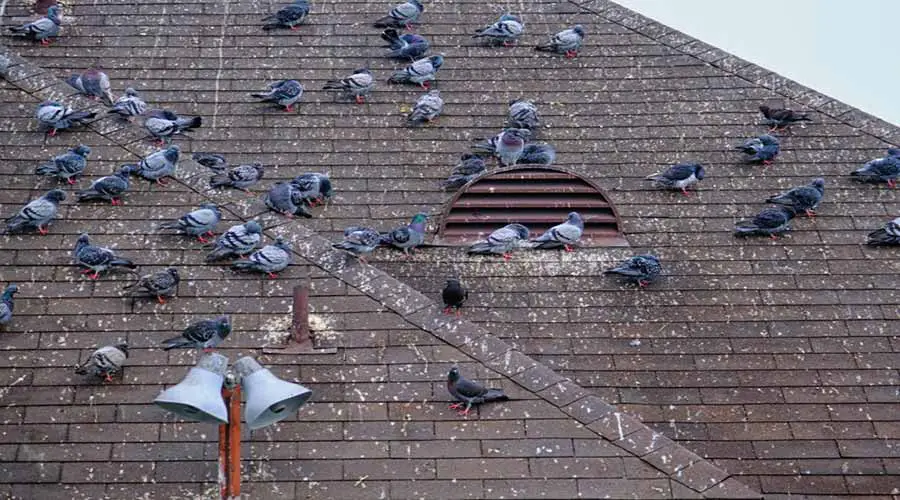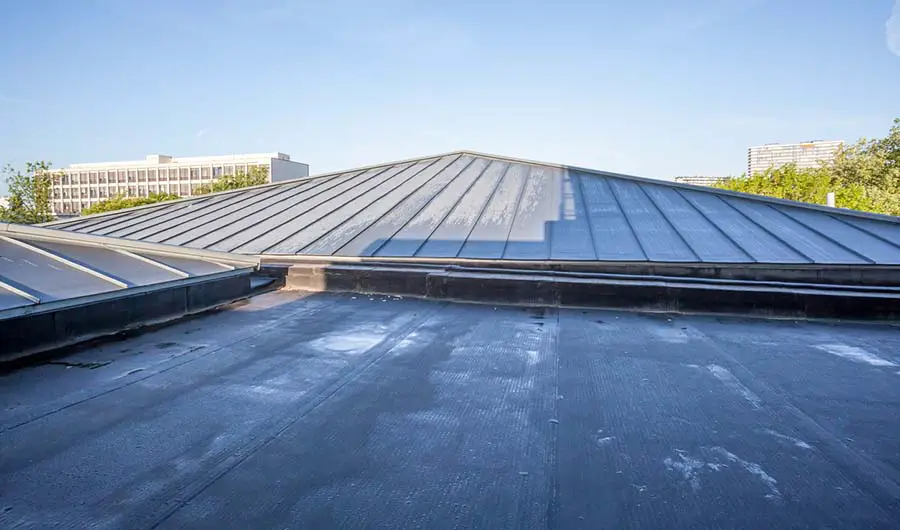
Generally, a modified bitumen roof should last about 15 to 30 years or more. However, multiple factors will play a role in its lifespan.
Some of the factors that affect the lifespan of a modified bitumen roof include the following:
- Quality of roofing materials
- The workmanship
- Architectural design
- Maintenance
- Environment
- Additional protection
- Thickness of the roofing membrane
If you would like to install this kind of roofing, it pays to learn what it is, its costs, and how to maintain it. This article discusses all these things to help you better understand how long a modified bitumen roof should last.
Factors that Affect the Lifespan of a Modified Bitumen Roof
Below are some factors that will affect your modified bitumen roof’s lifespan.
1. The Quality of Roofing Materials
The quality of the MBR you purchase is crucial because it affects its durability. Most MDRs will last anywhere from 15 to 30 years. But lower-quality roofs of that kind may last for an even shorter time.
If the manufacturer does not blend the roofing materials well, you will end up with a weak product that may not be as waterproof as it should be. Over time, those layers may separate, affecting the overall integrity of your roof.
Ensure that the brand you opt for is synonymous with high quality. And consider the warranties that the manufacturer offers.
The general rule of thumb is that the higher the product quality, the longer the warranty is available. But MBRs tend to have a 20-year standard warranty. So, watch out for that to give you an idea of the quality of the materials you buy.
2. The Workmanship

Poor installation could also involve mistakes, such as the incorrect installation of fasteners, which would cause them to back out in the future. Then your roof membrane will start to delaminate and slide. At some point, water will begin to seep into your home.
It is worth noting that poor workmanship also involves using defective materials, such as poor-quality fasteners and sealants. In addition, an unprofessional contractor could also drop tools, puncture your roofing membrane by handling their equipment poorly and fail to prime the working area.
When you employ a contractor who does not install the roof based on the required instructions, the modified bitumen roof may not last as long as it should. It will be compromised right from the start.
To safeguard yourself from the effect of poor installation, it would help if you asked for a contractor’s warranty. Such a guarantee could last several years or the lifetime of your modified bitumen roof. A reputable contractor would be willing to offer some form of warranty. So, be wary of those that don’t.
3. Architectural Design
The roofing slope determines which materials you can use for roofing. In addition, it influences the installation process of the materials you select. Also, it affects how water and snow flow and, thus, the roof’s ability to withstand the elements over a prolonged period.
You are supposed to use modified bitumen roofing if you prefer a low-slope roof system with a pitch of up to 3:12. That is because the membrane roofing is designed for multi-layer installation for it to perform well. You can roll it better on flatter roofing structures than steeply pitched roofs. And it is much safer for the contractors too.
For these reasons, you need to consider your home’s architectural design. If you have a steep roof pitch structure, a modified bitumen roof may also not adhere. And your contractors may have a much harder time installing it, which would also compromise its longevity.
4. The Maintenance
How well your modified bitumen roof is maintained will affect how long it lasts. However, it is usually rated for fire, wind, and hail because it is strong. But specific issues may cause the need for repairs.
These include prolonged exposure to sunshine, poor installation, pooling water, and physical damage from falling trees. Each of these roofing issues requires a different approach to maintenance.
For example, if a tree falls onto your modified bitumen roof and causes multiple punctures, a qualified contractor must remove it and patch it up. And if, in the process of installing or repairing your roofing, the mechanical equipment vibrations cause the fasteners to back out, your contractors much drive them in again.
On the other hand, if your seams fail because of poor installation techniques, you need to hire a contractor to re-seal them again.
Remember that you must take steps to maintain your MBR well. Poor maintenance may only deal with the symptoms but fail to deal with the source of the problems. That, in turn, will continue to compromise the overall roofing structure and, thus, necessitate replacement. So, it would be wise to perform regular inspections so you can fix common roof problems early on.
5. The Environment
You cannot consider the longevity of modified bitumen roofing without factoring in where you live. That is because your environment determines the weather conditions and elements that affect your roof.
For example, if you live in a hot area, you should worry about oils leaching from your roofing membrane, which is common with petroleum-based products, such as asphalt.
Over time, prolonged sunlight and heat exposure will cause splits on your modified bitumen roof. The effect is known as alligatoring. And if you do not deal with it quickly, it causes many leaks that will be difficult to repair. Therefore, you may be forced to replace your roof earlier than anticipated.
If you live in an industrial area with many factories or vegetation and animals surrounding you, your modified bitumen roofing may not last as long. In such environments, higher occurrences of bacteria or bird droppings may increase the rate at which your roof deteriorates.
In addition, you also need to think about the effect of salty and acidic conditions on a modified bitumen roof. These conditions, especially when combined with humidity, reduce the strength of a bitumen roof and its components and increase the rate at which it experiences wear and tear by corroding them.
For the above reasons, if you live in a region that experiences salty sea air, humidity, or plenty of acidic rains, those are things to consider.
6. Additional Protection
Typically, modified bitumen roofs come in black, which absorbs a lot of heat. That makes the modified bitumen roofing even more vulnerable to heat, which it already is due to oil leaching. It’s why issues such as alligatoring tend to occur.
To reduce the rate at which heat affects MBR, apply a protective UV-resistant coat, especially on smooth-surfaced versions of the product. The coating reflects some sunlight and can reduce roof temperatures significantly.
Doing so will reduce the rate at which the modified bitumen roof contracts and expands. In addition, these roof coatings can help restore degraded roofs and prevent erosion due to the elements. As a result, your roofing will not deteriorate as fast as uncoated versions will and will, thus, last longer.
You can also opt for a roofing membrane that includes a layer of granulates or slate chips. The mineral layer will protect the inner membrane layers from excessive heating and help preserve the roofing integrity.
7. Thickness of the Roofing Membrane
The longer a roof is exposed to the elements, the worse wear and tear it undergoes. Generally, thicker roofing membranes will withstand wear and tear better than their thinner counterparts. That is because weathering tends to erode its surface.
On average, modified bitumen roof sheets range from 0.12 to 0.18 inches in thickness. And each will weigh about 1.1 pounds per square foot. But you need at least two plies to enhance robustness. So, your roof can withstand lots of foot traffic and resist tears and breaks better if it is thicker. It will also stand up to Mother Nature for much longer.
Can You Repair a Modified Bitumen Roof?
Generally, MBRs do not need much maintenance when one performs the installation correctly. However, if an issue arises, you can repair the modified bitumen roofing to increase lifespan.
For APP versions, repairs usually consist of heat welding of the seams to take care of any seam failures. Also, you may need to apply a coating to safeguard this form of MBR from degradation caused by prolonged exposure to the sun.
On the other hand, SBS versions also require a protective coating to safeguard them from prolonged exposure to sunshine. In addition, you may need to hold weld the seams to deal with seam failures. Also, you may need to patch up the roof when cracks and blisters develop.
How Much Does It Cost to Install a Modified Bitumen Roof?

Most homeowners will spend around $5,600 to $11,500 to install or replace their roofing. That translates to about $3.50 to $5 per square foot. About 60% of that cost will go toward labor.
If you intend to install a modified bitumen roof, expect to pay anywhere from $4 to $8 per square foot, which is a bit higher. And if you need additional layers of roofing material, expect to pay an extra $1 to $2 per square foot.
But, of course, you can cut down on labor costs by doing the roofing installation yourself. The roofing product comes in huge rolls that are relatively easy to install. You may not need to hire a professional if you have decent roofing skills and access to expert advice.
However, doing the work on your own could compromise the integrity of the roofing if you don’t know what to do. Cutting corners may compromise the quality of your roof system and cost you so much more. And manufacturers will not look kindly on your activities, especially when claiming the warranty.
What Is The Difference Between Built-Up Roofing and Modified Bitumen?
A modified bitumen roof (MBR) is asphalt-based and has multiple protection layers. It is meant for low-sloping roofs. Typically, the bitumen within the roofing membrane has modifications comprised of polymers. And it also contains polyester or fiberglass reinforcement fabric.
Some people confuse it with a built-up roof (BUR), sometimes called tar and gravel roofs. After all, it is also asphalt-based and designed for low-slope and flat roofs. And the latter kind of roofing consists of multiple asphalt layers that alternate with ply sheets or reinforcement fabric. But these two roofing systems differ in some ways.
1. Length of Existence
For starters, the built-up roofing system has been in the market for much longer. It was in use in the US as early as the 1800s. On the other hand, the technology to create the modified bitumen roof is pretty recent. It was first developed in Europe in the 1960s, and the US started using it in the 1970s.
2. Installation Process
BURs differ from MBRs in the way one has to install them. For the former, the primary installation method is the mechanical fastening of the roofing membrane onto the insulation or roof deck.
However, modified bitumen roofs have multiple installation methods. These include self-adhering sheets, torch-down applications, cold-setting adhesives, or hot mopping processes.
3. Structure of Roofing Membrane
The internal construction of built-up roofing systems differs slightly from the modified bitumen roof’s construction.
BURs’ roofing membrane consists of asphalt or coal tar layers. These alternate with layers of felts made of non-woven polyester, coal tar-impregnated fiberglass, asphalt-impregnated fiberglass, coal tar-saturated organic layer, or an asphalt-saturated organic layer. Then the top cover consists of a mineral cap sheet.
For MBRs, the asphalt is blended with and modified using amorphous polypropylene (APP) or styrene-butadiene-styrene (SBS). Your choice depends on whether you will use them in hot or cold climates. The latter is a rubber polymer, thus giving the asphalt some of the rubber’s properties.
Where amorphous polypropylene is concerned, the reinforcement layer usually consists of a spun-bonded polyester mat, which is heavy. And where SBS is concerned, fiberglass reinforcement is usually the best option. And fillers, such as limestone, may also be used for this blend.
Final Thoughts
While it is wise to consider how long modified bitumen roofing should last, you can only get a proper estimate when considering the factors that affect its lifespan. And it also pays to weigh the pros and cons of this kind of roofing to determine if you are getting your money’s worth.
There is no doubt that modified bitumen roofs can be pricey, especially if you live in an expensive area and hire a professional to install multiple layers. They are also vulnerable to heat and other environmental conditions, such as salty sea air. In addition, some products require a relatively high level of expertise to install.
Remember that regular inspections can help you find issues on a modified bitumen roof before they become unmanageable. So, schedule regular roofing inspections to enhance its durability wherever you live.
Sources
- BUR & Modified Bitumen
- What is Modified Bitumen Roof + Pros & Cons
- Restoring or Maintaining Your Modified Bitumen Roofing Membrane
- THE BENEFITS OF A SELF-ADHERED, MODIFIED BITUMEN ROOF SYSTEM



